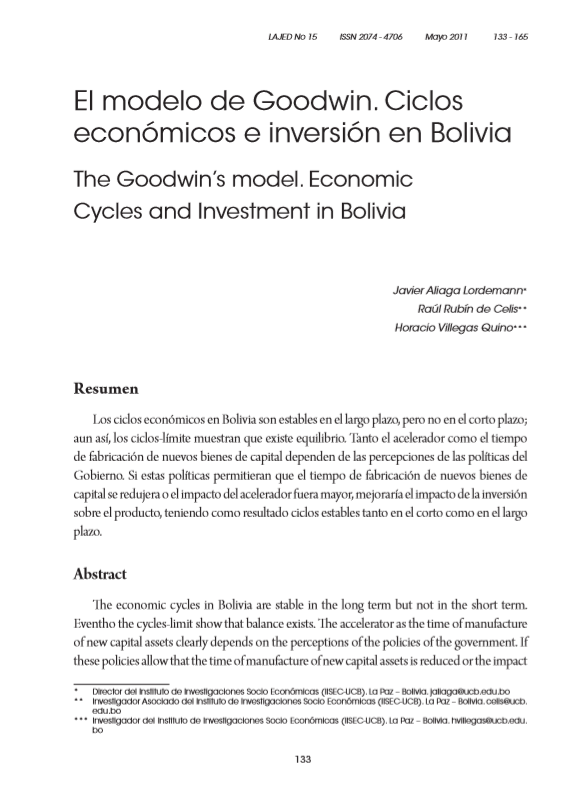The Goodwin’s model. Economic Cycles and Investment in Bolivia
DOI:
https://doi.org/10.35319/lajed.201115152Keywords:
Economic cycles, Investment, Balance, Stability, Short Term, Long Term, Accelerator, Product, non - linearity, Dinamic economy, InstabilityAbstract
The economic cycles in Bolivia are stable in the long term but not in the short term. Eventho the cycles-limit show that balance exists. The accelerator as the time of manufacture of new capital assets clearly depends on the perceptions of the policies of the government. If these policies allow that the time of manufacture of new capital assets is reduced or the impact of the accelerator was greater, would improve the impact of the investment on the product, having had as result stable cycles in the short term and length term.
Downloads
References
Ackley, Gardner (1970). Teoría macroeconómica. fte Macmillan Company (1º edición). Unión Tipográfica. Editorial hispano-americana.
Chian, Abraham C.-L. (2007). Complex Systems Approach to Economic Dynamics. Berlin: Springer-Verlag.
Costain, James (2005). “Apuntes sobre el PIB y hechos estilizados”. Universidad Carlos III de Madrid.
Hodrick, Robert y Edward C. Prescott (1997). “Postwar U.S. Business Cycles: An Empirical Investigation”. Journal of Money, Credit, and Banking.
Goodwin, R. M. (1951). “The Nonlinear Accelerator and the Persistence of Business Cycles”. Econometrica, (19), 1-17.
Maravall, Agustín, y Ana del Río. 2001. “Time Aggregation and the Hodrick-Prescott Filter”. Banco de España.
Matsumoto, Akio, y Suzuki, Mami (2006). “Coexistence of Multiple Business Cycles in Goodwin’s 1951 Model”. The Institute of Economic Research. Chuo University.
Matsumoto, Akio (2007). “Note on Goodwin’s 1951 Nonlinear Accelerator Model with an Investment Lag”. The Institute of Economic Research. Chuo University.
Strotz, R.H., J.C. Mcnulty y J.B. Nornal Jr. (1953). "Analysis of types of oscilations in Goodwin's Model of Business Cycles". Econometrica, (21), 330 - 411.






